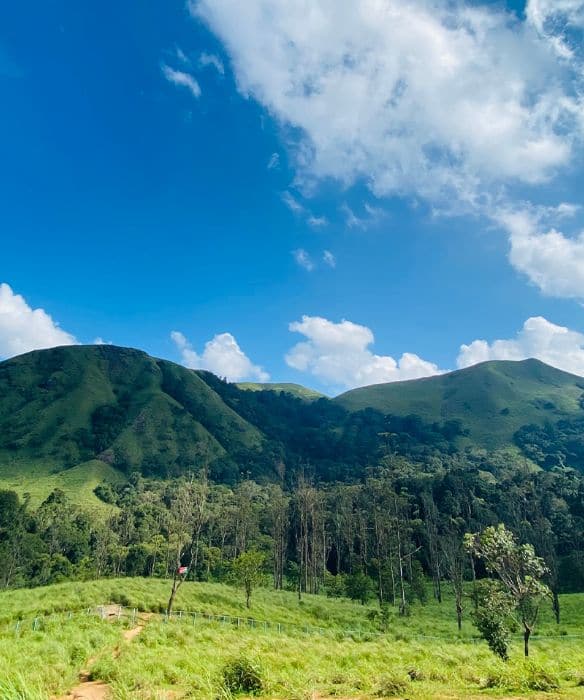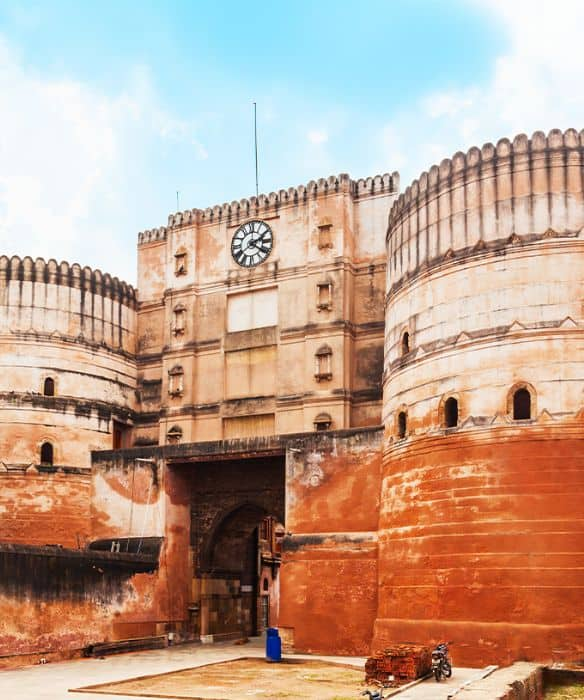Stay logged in to proceed with bookings, orders and offers.
On changing the terminal, you will loose items in your cart. Are you sure you want to change your terminal?
Witnessing the Ganga aarti being performed in Haridwar is akin to experiencing spiritual bliss. The ritual fills one's soul with a deep sense of bliss, humility, and spiritual connection, especially when it is performed on the day of Makar Sankranti.
The ritual of performing aarti, or the Hindu Ritual of Light, is a daily spiritual practice that is performed twice daily to appease a deity or goddess so that they grant the wishes of the worshipper. It is a ritual that is performed by devotees to praise the Almighty for his assistance and support.
The word "aarti" finds its earliest mention in the Vedas. It is believed that during the Vedic times when there was no electricity, aarti was a practice that involved illuminating an idol set deep within the inner sanctum of a temple. An oil lamp was lit and moved from the deity's head to toe to allow devotees to see the sacred deity. This was performed while the devotees sang bhajans (devotional songs). This ritual eventually came to be known as an aarti.
The word aarti is made up of two Sanskrit words: aa means complete and rati means love. Hence, when a devotee performs an aarti, it denotes their complete and persistent love towards God. It is also notable that devotees commonly chant Vedic mantras while performing aarti and carry out the ritual with a sense of deep reverence, adoration, and meditative awareness.
During aarti, ghee-soaked wicks, camphor, incense, water, flowers, and conch shell are used. These offerings represent the elements of the Universe as described in the Bhagavad Gita: the flowers represent earth; the oil lamp fire; the sound of the conch shell ether; and finally water. Therefore, the act of performing aarti is evocative of making an offering of the Creation to the Deity that is believed to have created the Universe.
The power of aarti is universal. It brings the subconscious of the devotee closer to the Gods. It enables one to free themselves of the stress of everyday life and come together in peace, joy, and reverence.
Ganga aarti is a daily ritual of worshipping and paying homage to the holy River Ganga. It is performed on the banks of the sacred river as it meanders through the cities of Haridwar, Rishikesh, Varanasi, and Allahabad. In Haridwar, Ganga aarti is performed at Har-Ki-Pauri Ghat (which translates to Footprint of God). The practice of performing Ganga aarti at Har-Ki-Pauri was started by Pandit Madan Mohan Malviya in the first decade of the 20th century. As dusk falls, Ganga aarti is performed in the three cities of Rishikesh, Haridwar, and Varanasi, of which the one in Haridwar is especially popular among tourists and devotees.
During Ganga aarti, priests stand along the banks, facing the River Ganga, and wave beautifully lit oil lamps in a circular motion. Later, the oil lamp is brought amidst the crowds of devotees, waiting along the sidelines to receive the blessings infused in the sacred flames of the lamp. Devotees move their hands over the flames and reverently touch their eyes and head to receive the blessing. It is also believed that Ganga aarti can cure diseases, ailments, and mental illnesses of devotees who attend the ceremony.
The River Ganga and the auspicious occasion of Makar Sankranti are very closely associated. River Ganga is considered to be the holiest river in Hindu mythology and plays a vital role in the life of Hindus across the world. Originating in Gaumukh, near Gangotri in the Himalayas, it flows down the hills in north India and enters the plains at Haridwar (which translates to "the Gate of Hari"). It continues to wind through West Bengal – where it is known as River Hooghly – to finally meet the Bay of Bengal.
River Ganga is revered as a goddess who once resided in heaven. Saint Bhagirath spent a long time in meditation to liberate his ancestors. His devotion pleased Lord Shiva so much that he asked Ganga to come to earth. However, He restrained her powerful flow. When Ganga flowed over the ashes of Bhagirath's ancestors, they attained moksha (liberation from the cycle of death and rebirth). Following the same tradition, Hindus continue to offer the ashes of their deceased relatives to the Ganga, hoping for the river to enable them to attain moksha.
River Ganga is also known as Bhagirathi – after Saint Bhagirath – where it originates. As it flows down, it takes on the name Ganga after its confluence with the Alaknanda river in Devprayag, in Uttarakhand. River Ganga is revered in India not only as a river but also as a Divine Mother. When you take a dip in Ganga's holy water, it cleanses you of your sins. It is also believed to liberate the souls of the passed on. It's more than just a river; it's a way of life in India.
On Makar Sankranti, a holy dip in the Ganges at Har-ki-Pauri is believed to wash away one's sins, bring peace to the souls of ancestors, and aid in the attainment of moksha. Makar Sankranti is the most important of the 12 sankranti in the year. Makar Sankranti is made of two words, Makar and Sankranti. While Makar is the sign of Capricorn, Sankranti means transformation or movement. In other words, it denotes the movement of the Sun into the zodiac sign of Capricorn.
More importantly, the celebrations mark the awakening of the Gods from their six-month slumber. So, a holy dip in the Ganga followed by the Ganga aarti has special significance on this day.
Haridwar is synonymous with Har-ki-Pauri and Ganga aarti. I was lucky to visit the city on the auspicious occasion of Makar Sankranti and bathe at Har-ki-Pauri. According to ancient Hindu religious texts, Lord Vishnu appeared here to bless Bhratuhari. Thousands of pilgrims congregate here to watch Ganga aarti every day from 6:00 pm and 7:00 pm. However, the numbers swell to lakhs during Makar Sankranti. I consider myself fortunate to have had the opportunity to witness the aarti on Makar Sankranti here, as well as float diya laden with flowers on the waters of the Ganga.
Makar Sankranti is an auspicious day for Hindus. The Ganga aarti, which is magical on any given day, is even more so during the festival. A priest told me that performing the aarti on this day is symbolic of light being shown to the Gods who have just awoken after a six-month sleep.
It is not difficult to understand how the ritual of performing an aarti was an opportunity for devotees to obtain a darshan of the Gods during Vedic times. On Makar Sankranti, it is believed that since the Gods awaken on this day after a long period of sleep, they require proper lighting (in the form of the aarti) to see and bless their devotees. As a result, Ganga aarti on Makar Sankranti is of great significance to a devotee.
I attended the aarti at sunset on the auspicious day of Makar Sankranti and it lasted longer than the usual 45 minutes. On this day, Ganga aarti was performed by special priests chosen by Ganga Sabha, an NGO that has managed Ganga aarti since its inception.
The priests carried the idol of the River Ganga from a small temple near Har-ki-Pauri Ghat in a palanquin, assisted by other devotees and myself. It was then placed on a platform on the banks of the river. Priests then began the ceremony by chanting Sanskrit mantras while offering cotton, colours, milk, honey, sugar, curd, ghee, and other items. They sang Ganga Lahari, a Sanskrit poem written by Pandit Jagannath, and chanted "Har Har Gange, and Jai Maa Gange" throughout the journey.
It was an exhilarating experience for me to witness the priests worshipping the River Ganga in unison. I still consider myself lucky to have witnessed one of the most awe-inspiring ceremonies that a person can witness in their lifetime! After the ritual was over, I decided to pause awhile by the banks to soak in the divine, blissful atmosphere of the River Ganga, overlooked by a colossal statue of Lord Shiva.





The Adani One expressly disclaims all liability, direct and indirect, in respect to actions taken or not taken based on any or all the contents of this Blog. The Blog is an opinion of the contributor based on the collation of data from various sources and is provided only for information purpose. Adani One does not canvass, advertise, solicit, invite or induct for any product, merchandise, information, brand or any other materials mentioned in the Blog, nor does it obtain any monetary benefit from the same. Reader is advised to read and apply his/her intellect and discretion in this regard. Any Intellectual Property mentioned in this blog belongs to the rightful owner. We do not intent to claim any interest over the same.